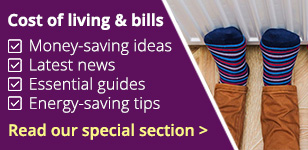The Isa stealth tax! Savers will pay an extra £605m a year by 2029
- Savers will be holding more cash outside their Isas – and the government knows it
Savers will have to pay £605 million a year in extra tax by 2029 as the government freezes how much can be put into Isas.
Government rules allow savers to put £20,000 a year into Isas, £9,000 into Junior Isas and Child Trust Funds and £4,000 into Lifetime Isas.
Any money this money earns in interest is not taxed, unlike most other savings deals.
These limits remained frozen in the recent Budget, meaning savers on these deals will end up paying £605 million a year in extra interest by 2029/2030, according to government figures.
Under the radar: The government will rake in huge sums of money from its stealth tax on savings
The extra tax happens because once someone tops up their Isas with £20,000, they start paying tax on the interest they make, with the same £9,000 principle applying to Junior Isas and Child Trust Funds.
The reason that more savers in total will be paying tax in 2029/30 is that the value of £20,000 will now be worth significantly less due to inflation.
As the value of money falls, more savers will find themselves topping up their Isas more quickly and then facing a tax bill. This will impact wealthier savers who will be able to put aside a larger portion of their money.
> Best cash Isa rates 2024: Find the best easy-to-access fixed-term deals
Basic rate taxpayers can earn £1,000 in interest before paying tax – the Personal Savings Allowance (PSA) level.
Higher rate taxpayers can earn £500 before paying tax, while higher rate taxpayers have no PSA at all and so are taxed on savings interest held outside an Isa.
Basic rate taxpayers pay a 20 per cent tax on savings interest earned outside an ISA and certain other savings arrangements, such as NS&I Premium Bonds. For taxpayers with a higher rate, this is 40 percent, while taxpayers with a higher rate pay 45 percent.
For example, a basic rate taxpayer earning £2,500 interest on savings outside an ISA would pay 20 per cent tax on £1,500 for a £300 bill.
A higher rate taxpayer in the same position would have a bill of £800 as his PSA falls to £500 and he pays 40 per cent tax on £2,000.
An additional rate taxpayer in this hypothetical example would have a savings account of £1,125 as they do not have a PSA and pay a rate of 45 per cent on any savings interest held outside Isas.
Bestinvest personal finance analyst Alice Haine said: ‘Freezing the annual subscription limit at £20,000 for a further six years, alongside similar freezes on Junior Isas and Child Trust Funds – until the end of the 2029-2030 tax year – is expected to save £ 605 million for the state treasury.
‘If the Isa benefit had been upgraded in line with inflation since 2017 – the last time it was increased – it would be above £26,000 this tax year.
‘If the figure were adjusted for inflation up to 2030, based on the OBR’s inflation forecasts, it could potentially be closer to £30,000 by then.
‘Instead, in real terms it is effectively a reduction in the ISA benefit because it is not keeping pace with inflation.
‘This means people can protect less of their money from tax if they are able to max out the benefit, causing another secret tax freeze on the Isa benefit.’


